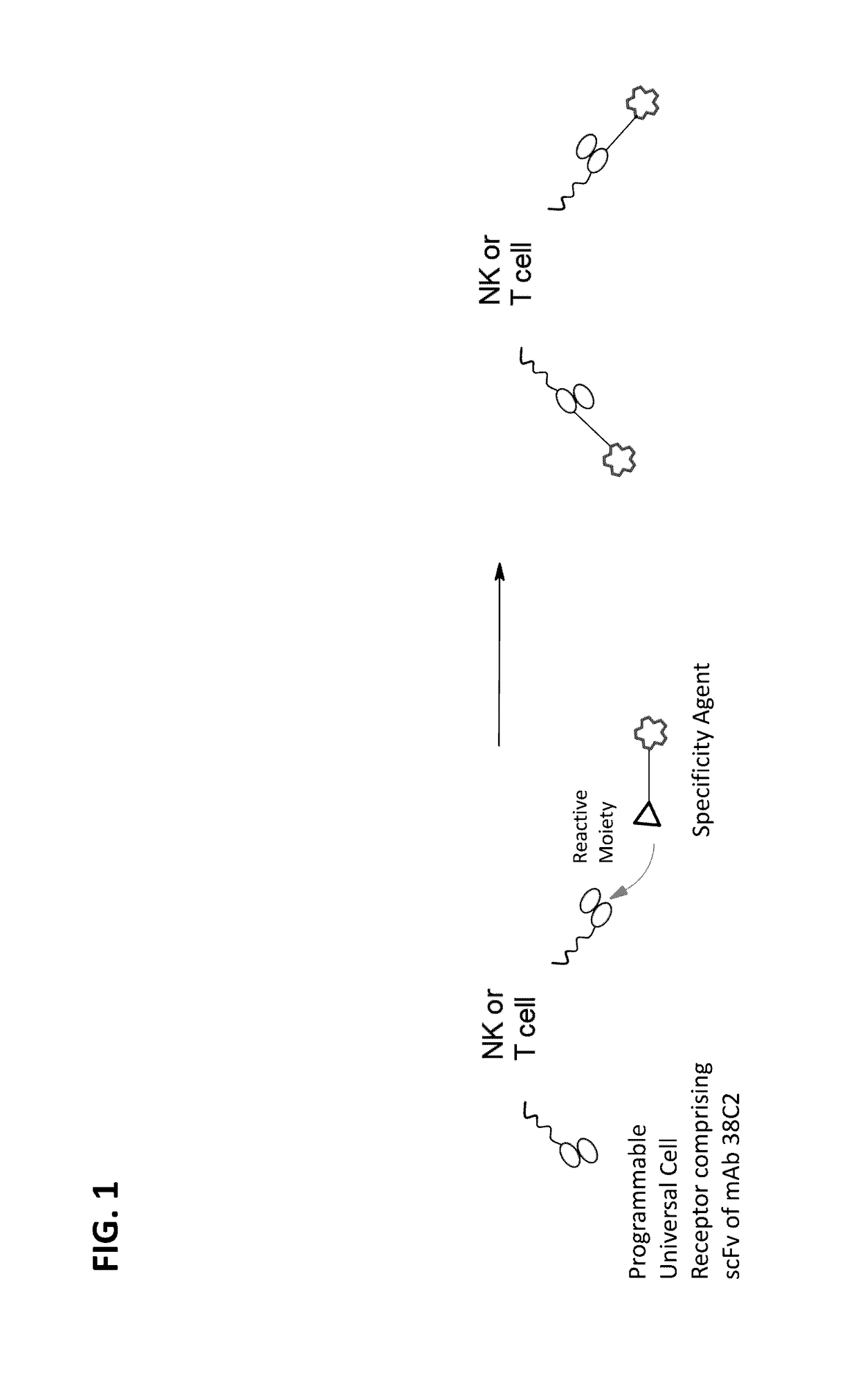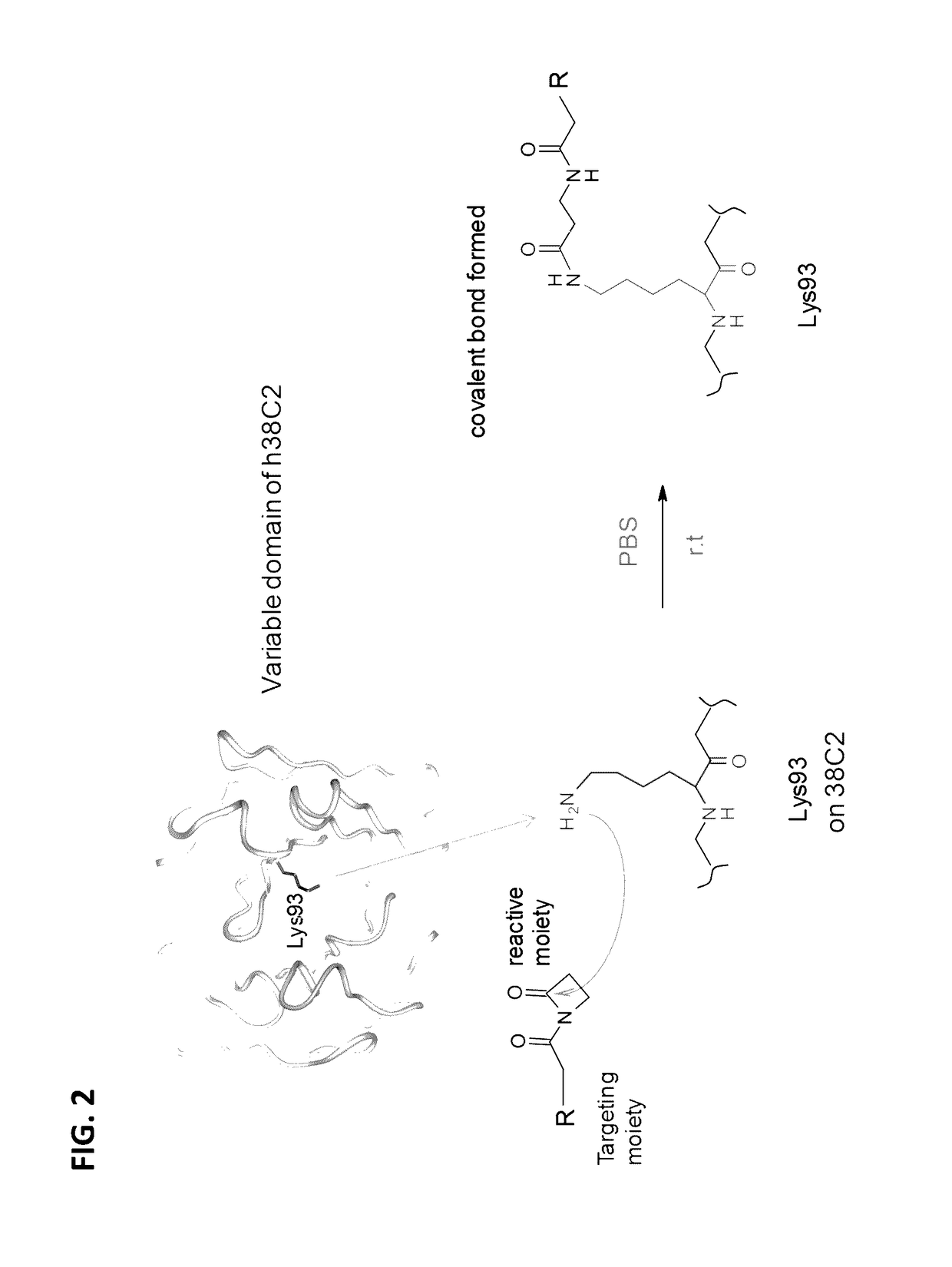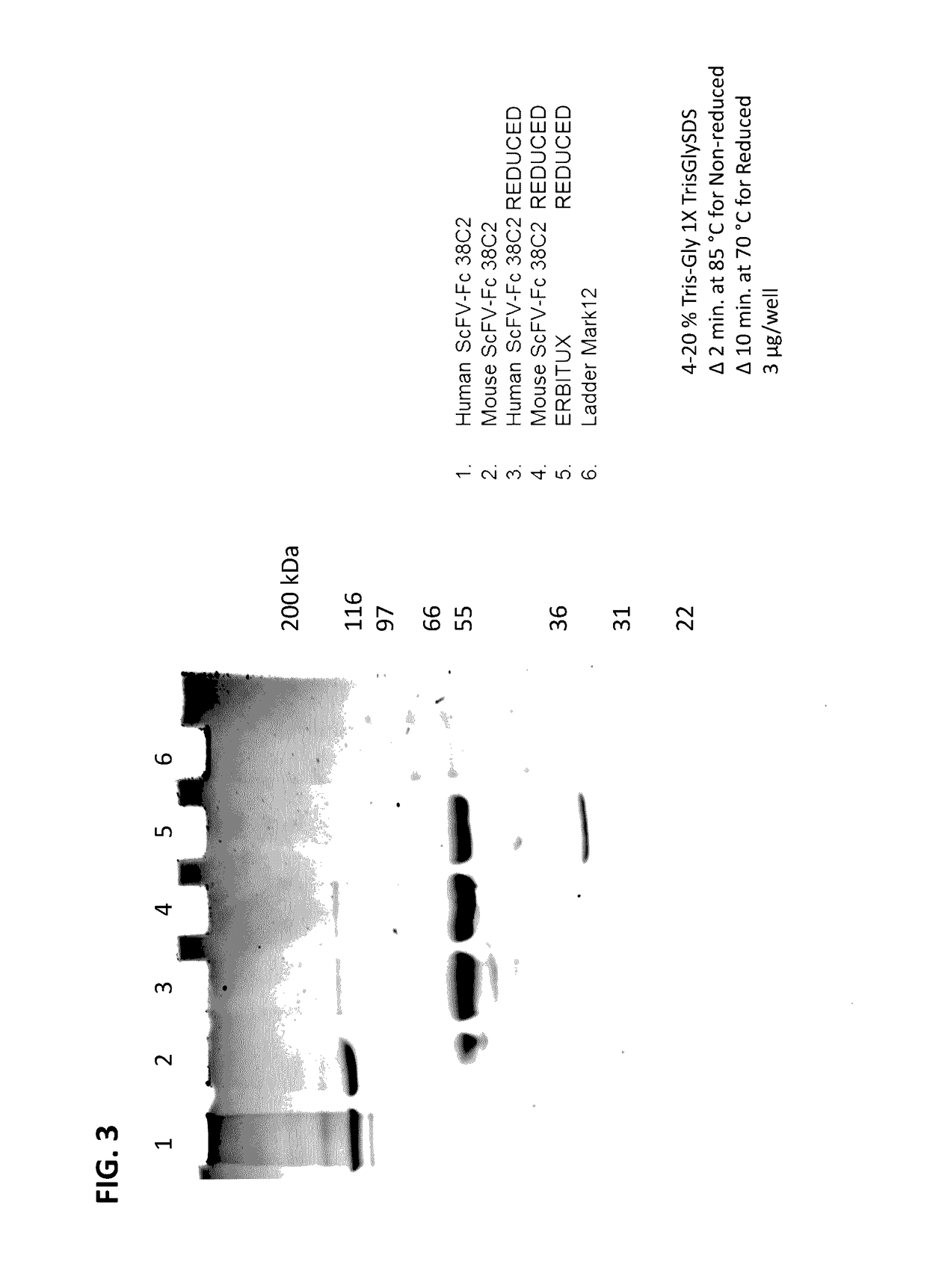Programmable universal cell receptors and method of using the same
a universal cell receptor and programmable technology, applied in the field of nucleic acids and host cells, can solve the problems of limited use of conventionally-developed pharmaceutical drugs and biological effector molecules for treating complex diseases, limited availability of effective treatments for complex diseases, and non-desirable side effects
- Summary
- Abstract
- Description
- Claims
- Application Information
AI Technical Summary
Benefits of technology
Problems solved by technology
Method used
Image
Examples
example i
ion and Characterization of Humanized and Murine 38C2 scFv-Fc
[0249]The murine monoclonal antibody 38C2 is a catalytic antibody discovered by Lerner / Barbas group at Scripps Research Institute in 1990s (Wagner et al. SCIENCE (1995) 270: 1797-1800). The variable domain contains a lysine residue located in a hydrophobic core. Due to the microchemical environment, the lysine side chain NH2 group remains unprotonated under physiological conditions, feasible to attack a reactive moiety to form a covalent bond (FIG. 2). As illustrated in FIG. 2, the Lys93 residue in the variable domain of a 38C2 antibody (e.g., humanized 38C2 antibody) may serve as a nucleophile to interact with the reactive moiety of a specificity agent, resulting in the formation of a covalent bond between the Lys93 residue and the specificity agent.
[0250]To generate humanized and murine 38C2 single chain variable fragment (scFv) of humanized or murine 38C2, the heavy chain and light chain variable domain sequences of the...
example 2
n of Programmable Universal Cell Receptors
[0253]In order to generate a programmable universal cell receptor (PUCR), the gene encoding the domains of the PUCR was codon optimized and custom synthesized (GenScript). The full length gene of the PUCR encodes in-frame sequences for: 1) a signal peptide for secretion or cell surface expression of the molecule; 2) a myc-tag for PUCR expression detection; 3) a catalytic antibody or catalytic portion thereof (e.g., scFv-Fc) as described in Example 1; ; 4) a hinge region (e.g., a CD8 hinge region); 5) a transmembrane domain (e.g., a CD3zeta transmembrane domain); 6) a cytoplasmic domain (e.g., a CD28 intracellular domain for T cell persistence and / or a CD3zeta intracellular domain for NK or T cell activation). The amino acid and nucleic acid sequences of each of the components are listed in Table 5 below.
TABLE 6PUCR Component SequencesSEQIDNO:DescriptionSequence 1Signal MEWSWVFLFFLSVTTGVHSpeptideamino acid sequence 2Myc-tag EQKLISEEDLamino...
example 3
of T Cells or NK Cells Expressing Programmable Universal Cell Receptor (PUCR-T or PUCR-NK Cells) with Specificity Agents
[0254]PUCR-T cells and PUCR-NK cells are generated. In order to label PUCR-T cells or PUCR-NK cells which express PUCR, cells are contacted with specificity agents (e.g., antigen binding molecules) which contain a targeting moiety (e.g., a tumor-specific protein-binding moiety) and a reactive moiety. The reactive moiety and the targeting moiety may be connected via a linker (e.g., a polyethylene glycol (PEG) fragment). For example, folic acid-diketone, folic acid-azetidinone, DUPA-diketone, and DUPA-azetidinone are used as specificity agents. The chemical structures of these four exemplary specificity agents are illustrated in FIGS. 7-11. Folic acid acts as a targeting moiety that targets folate receptors, which are highly overexpressed on the surface of many tumor types, and 2-[3-(1, 3-dicarboxy propyl)-ureido] pentanedioic acid (DUPA) acts as a targeting moiety t...
PUM
| Property | Measurement | Unit |
|---|---|---|
| equilibrium dissociation constant | aaaaa | aaaaa |
| pH | aaaaa | aaaaa |
| pH | aaaaa | aaaaa |
Abstract
Description
Claims
Application Information
 Login to View More
Login to View More - R&D
- Intellectual Property
- Life Sciences
- Materials
- Tech Scout
- Unparalleled Data Quality
- Higher Quality Content
- 60% Fewer Hallucinations
Browse by: Latest US Patents, China's latest patents, Technical Efficacy Thesaurus, Application Domain, Technology Topic, Popular Technical Reports.
© 2025 PatSnap. All rights reserved.Legal|Privacy policy|Modern Slavery Act Transparency Statement|Sitemap|About US| Contact US: help@patsnap.com



